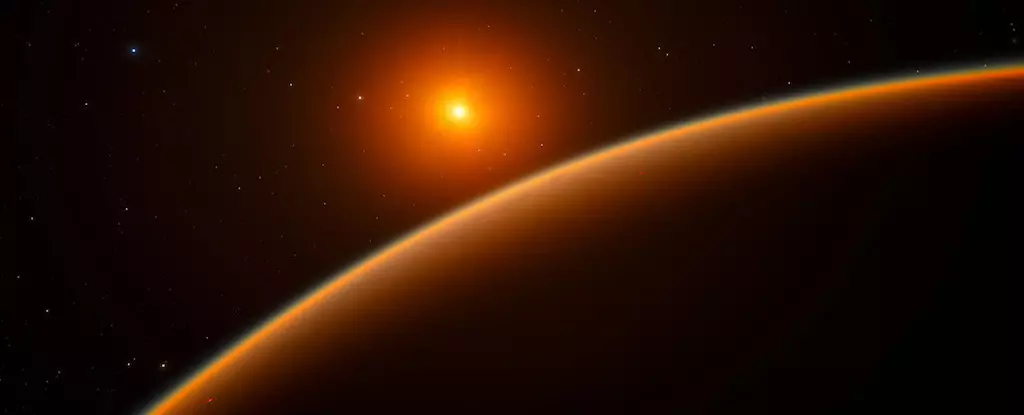Recent findings have launched a wave of excitement in the field of astrophysics, suggesting that Earth-like exoplanets—particularly super-Earths—are far more prevalent in our Milky Way than previously considered. This revelation stems from a meticulous study led by astronomer Weicheng Zang of the Harvard and Smithsonian Center for Astrophysics. Unlike traditional examinations that focused on gas giants and massive ice planets, this research highlights a super-Earth orbiting its star at a distance that bears resemblance to that of Jupiter.
It’s important to grasp the significance of the term “super-Earth.” This classification refers to planets larger than Earth but smaller than Neptune, providing a tantalizing realm of possibilities in terms of their composition and potential habitability. The discovery of such a world in a previously unexplored orbit extends the known diversity of planetary systems within our galaxy, challenging long-held assumptions and expanding our understanding of cosmic phenomena.
New Methodologies Yield Old Questions
The process of identifying these distant worlds hinges on gravitational microlensing—an intricate phenomenon where a massive object, known as the “lens,” distorts spacetime, causing light from a background star to bend. This temporary spike in brightness can reveal the presence of a planet that would otherwise remain hidden from direct observation. The current study leveraged data from the Korea Microlensing Telescope Network (KMTNet) across three continents, enabling researchers to track these rare star events and better assess the solar system’s composition.
Interestingly, the study analyzed a specific microlensing event, OGLE-2016-BLG-0007, detected in 2016. Historically, microlensing techniques have been underutilized in revealing exoplanetary bodies, particularly in outer orbits. Yet, this study demonstrates how such methods can uncover a broader swath of super-Earths, thus reshaping our understanding of what constitutes a ‘typical’ solar system.
Implications for Planetary Formation
The researchers compiled a substantial dataset of exoplanets, revealing that super-Earths are not merely confined to warm orbits close to their host stars—a trend that had previously dominated findings in the exoplanetary realm. Zang’s team estimates that around one in three stars in our galaxy likely hosts a super-Earth with a wide, Jupiter-like orbit. This statistic implies a significant demographic shift in our understanding of global planetary distribution, illuminating a landscape rife with potential habitability beyond what’s observed in our solar system.
An intriguing point brought forward by co-author Andrew Gould emphasizes inconsistencies within the general pattern of planet sizes. By showcasing the prevalence of diverse planetary types, researchers shift the narrative surrounding our galaxy’s demographics, representing a departure from conventional wisdom that often oversimplifies complex planetary systems.
Expanding the Cosmic Plan
As the study suggests, super-Earths exhibiting a variety of orbital behaviors expand the possibilities for planetary formation theories. Various factors influence the birth of a planet, such as distance from the star, the mass of the protoplanetary disk, and the chemical makeup of the primordial materials. By identifying super-Earths further from their stars, the study potentially hints that planetary systems may develop in ways we’ve yet to fully understand, diverging from the formation history of our solar system.
This shift not only fuels the endless curiosity of researchers but also contributes richly to the overarching narrative of astrobiology and the search for extraterrestrial life. This transition towards seeing potential for life-supporting environments in the outer regions of star systems opens pathways for novel inquiries into how diverse planetary conditions might foster life.
The Challenge Ahead
Despite the optimism these findings confer, the observatory task of detecting microlensed planets remains immensely challenging. The rarity of gravitational microlensing events means researchers have barely scratched the surface of what exists in our cosmos. Astronomer Richard Pogge eloquently illustrates this point: locating one of these rare star events is difficult, but finding one that is also home to a planet compounds the challenge significantly.
As we venture further into the 21st century with advanced telescopic technologies and methodologies, our understanding of exoplanetary distributions will undoubtedly continue to evolve. The potential abundance of super-Earths entwined within distant orbits serves as both a hopeful indicator and a significant challenge for astrophysicists, beckoning us to remain curious and tenacious in our hunt for cosmic knowledge. As these celestial bodies reveal their secrets, they tantalize our longing for understanding the universe and everything it holds.

